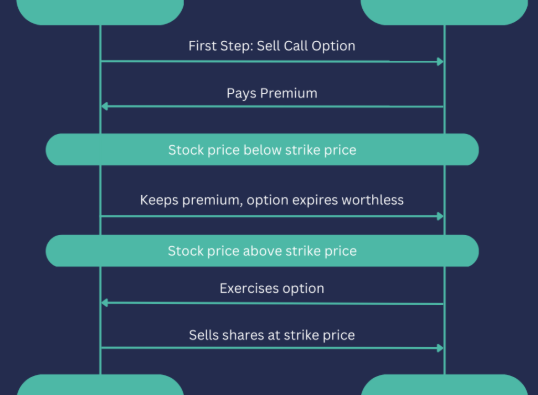
Are you looking to make smarter investment choices that align with your financial goals and risk tolerance? Let’s explore different portfolio management strategies and models that can guide you toward making the best decisions for your money.
What is Portfolio Management?
The way you manage your investments significantly affects your ability to build wealth over time. However, there’s no universal strategy because everyone’s financial goals and risk appetite are different. The key to success lies in understanding your options so you can choose the strategy that fits your preferences and objectives.
Now, let’s delve into some common portfolio management strategies, ranging from aggressive to defensive, to help you figure out the best fit for your situation.
Factors to Consider Before Choosing a Strategy
Before selecting a portfolio management strategy, there are four key factors to evaluate:
- Objective: Clearly define your financial goals. Understanding your broader financial situation will help ensure that your chosen strategy aligns with your long-term objectives.
- Risk Tolerance: Everyone handles risk differently. Assess your comfort level with market fluctuations to determine how much risk you are willing to take on.
- Time Horizon: The length of time you plan to keep your investments in the market plays a crucial role. The longer your horizon, the more flexibility you have to endure market volatility.
- Financial Situation: If you’re free from debt and have stable finances, you may be more open to taking on higher risks. Your current financial health will affect the amount of risk you can afford.
Now that we understand the core factors, let’s dive into three distinct portfolio management strategies.
3 Portfolio Management Strategies: Aggressive, Balanced, and Defensive
1. Aggressive Investing
Aggressive investing involves taking high risks in hopes of achieving high returns. This strategy typically includes a higher proportion of stocks compared to bonds and focuses on companies with less predictable returns. Aggressive strategies are most suitable for investors with more experience who can withstand market volatility and are focused on long-term goals.
For young investors or those in the accumulation phase of life, aggressive investing is often the best choice. With a long investment horizon (10 years or more), you can afford to take risks and invest in growth stocks, retirement accounts, or education funds. However, this strategy isn’t ideal for short-term goals like buying a home.
While aggressive investing can lead to significant wealth accumulation, it can also cause anxiety during market downturns. Always consider your risk tolerance, time frame, and financial situation before diving into high-risk investments.
2. Balanced Investing
Balanced investing combines both risk and stability, making it a popular choice for those looking to strike a middle ground. This approach typically splits your portfolio into 60% stocks and 40% bonds or other conservative investments. A balanced portfolio aims to achieve steady returns, typically around 5-7% annually, while also offering some protection against market volatility.
Individuals in their 40s and 50s, who are concerned with both long-term growth and short-term financial needs, often opt for balanced strategies. A well-balanced portfolio can also provide enough income to cover retirement expenses while continuing to grow.
3. Defensive Investing
Defensive investing focuses on minimizing risk and providing steady returns, often through conservative investments like bonds and cash equivalents. This strategy is ideal for those who prefer stability over high returns or are nearing retirement and wish to preserve their wealth.
For example, if you face an unexpected financial challenge like a medical emergency, a defensive portfolio can provide a more predictable investment outcome, offering a sense of security. Though defensive strategies typically yield lower returns than aggressive options, they offer fewer fluctuations, making them suitable for individuals who need to access their money sooner.
3 Portfolio Management Models: Active, Factor-Based, and Passive
1. Active Investment
Active portfolio management involves employing professionals to monitor and adjust your portfolio regularly. Active managers select investments based on research, deciding which stocks to buy, hold, or sell, based on market conditions. Although this approach can lead to higher costs due to management fees, it aims to outperform market benchmarks by making strategic decisions.
If you prefer a hands-on approach with professional guidance, active management may suit you. However, be prepared for the added costs associated with this model.
2. Factor-Based Investment
Factor-based investing, also known as smart beta investing, is based on the premise that certain characteristics (or “factors”) drive market returns. This strategy emerged in the 1960s and gained traction in the 1980s and 90s. It involves selecting stocks based on factors such as size, value, and momentum, with the goal of outperforming the market over the long term.
Factor-based investing offers a more cost-effective alternative to traditional active management, as it doesn’t require detailed research on individual companies. However, it can require patience, as returns may be slower to materialize.
3. Passive Investment
Passive investing is an approach that aims to replicate the performance of a broad market index, such as the S&P 500. By avoiding the costs associated with active management, passive investing offers a low-cost, long-term investment strategy that aligns with the overall market’s growth.
For investors who prefer a “set it and forget it” approach, passive investment through index funds is an attractive option. While it may not provide the highest returns, it offers stability and low fees, making it a solid choice for those with a long-term horizon.
Final Thoughts
When crafting your investment portfolio, remember the principle: “Don’t put all your eggs in one basket.” Diversification is key to reducing risk and ensuring that the success of your portfolio isn’t reliant on a single investment. While diversification won’t eliminate losses or guarantee the highest returns, it helps smooth out volatility and mitigates specific risks.
By diversifying your portfolio and choosing the right management strategy, you’ll be better positioned to achieve your financial goals while managing risk. Whether you choose an active, factor-based, or passive approach, finding the right mix of investments will ultimately set you up for long-term success.









